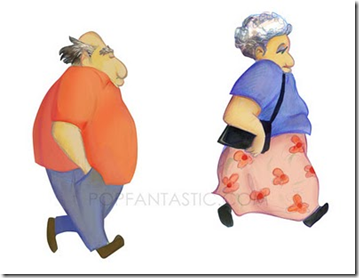I tend to be a person who resists conformity and rejects tradition in favor of personal preference and a desperate attempt to preserve individuality and perhaps even enhance it.
In reflecting upon the recent revisions of our rock opera, The Clowns, I came to realize that I have been crafting the play around an issue that is at the core of my being, and one closely aligned to my resistance of conformity.
At its heart, The Clowns is a play about the decisions that young people must make upon entering adulthood. Will they give up their childhood dreams in favor of something more realistic, probable and conventional, or will they hold on to the dreams of childhood even when all hope seems lost?
Most important, who is nobler? The people who dare to dream in the face of unlikely outcomes and potential ruin or the people who modify, compromise or otherwise alter their dreams in order to earn a living, support a family and more closely align themselves with societal norms?
Offstage, I find that most people eventually succumb to the latter, favoring conformity, conventionality and tradition over the dreams of their youth, and in many ways, sensibly, albeit tragically, so.
It’s a question I framed in a post from a few years ago entitled Where have all the rebels gone? I wrote:
I tend to be someone who constantly wonders where all the rebels have gone. I cannot understand what causes the adolescent hellion, the twenty-something non-conformist and the teenage idealist to suddenly accept, embrace and surrender to the traditions and mores of modern society. I marvel at people who are my age; former activists, dreamers, militants and all-around challengers of authority, who have become so thoroughly invested in suburban conformity, expectations of appearance, the etiquette of the masses, and an overall concern with the opinions and values of the majority that they have begun to resemble the conservative, staid, judgmental, risk-free nature of their parents.
These are questions that have plagued me for some time. I suspect that it is why I have slowly been crafting our play in this direction, in order to address these issues, albeit unknowingly.
After years of postulating and searching, I am here to report that I’ve found all the rebels. Unfortunately, they didn’t go anywhere.
A paper in this week’s Science magazine seeks to demonstrate how a person’s personality is constantly changing and evolving, and though most will acknowledge changes between the past and present, we mistakenly assume that these changes have ceased to take place and our personalities and belief systems are set in stone. The research indicates otherwise. Despite our belief that we have achieved our personality apex, we will continue to change throughout our entire lives. It’s what’s known as the “end of history illusion.”
From a TIME magazine report on this issue:
The older you get, the less you believe you have changed or will change. This finding isn’t surprising: for years, researchers have confirmed the common-sense idea that one’s personality and preferences become more stable with age. At 80, your grandfather will likely disparage whichever political party he opposes with more ferocity than he did at 65. As the Science research explains, even young people feel their current qualities are good qualities. They find it hard to imagine their beliefs and values could significantly change — even though most of us actually change our views often as time progresses.
It would appear that I am still surrounded by the rebels, but they simply are no longer rebels. Their beliefs and values have undergone enormous transformation over the last twenty years, and as a result, many of them have become their parents.
This is not to say that my belief system has not changed in the last twenty years as well. It most certainly has. I can list any number of ways in which the person I am today is vastly different than the person I was two decades ago.
But I also believe that my refusal to abide to tradition and convention and conform to cultural expectations has not dissipated. At least I like to think it hasn’t. I may be more subtle at times about the ways in which I reject these conventions, opting for precision over brashness, but reject them I continue to do.
I am also not the only one. One of the most nonconforming people I know (and this may come as a shock to anyone who knows her) is my wife. She is an undercover nonconformer, disguising her frequent rejections of tradition and convention with a patina of pleasantry, politeness and popularity. People adore my wife with a fervor I have rarely seen. She is a kind, generous person who puts everyone around her at ease and genuinely cares about their wellbeing. Yet she is also is less conforming than almost everyone I know. She has found a brilliant balance between the rejection of conformity and her ability to navigate the world without raising a stir.
It’s quite remarkable.
I suspect that I cannot be an undercover nonconformer like my wife, mostly because I am not as kind, thoughtful and measured as she.
But don’t let her fool you. She remains a rebel. To start, she married me, which may have been the most nonconforming act of her life.
When I first told my close friend that I was dating Elysha, he laughed, assuming that I was joking.
Elysha Green date Matthew Dicks? Not in a million years.
Not only was the match unlikely because the seeming difference in our personalities, but my wife is Jewish, and I am decidedly unreligious. Almost every person in my wife’s family has dated and married within the faith, When I attend family gatherings, I am often the only non-Jewish person in the room.
Yet not only did my wife marry me, but she almost never dated a Jewish man. Instead, she opted for Gentiles and heathens while her family (and most Jewish families in general), did otherwise.
My wife has also embraced the Christian holidays like Christmas to a degree that would make many Jews uncomfortable. Rather than attempting to prevent our children from falling in love with the trappings of the Yuletide season (and risk losing them to the marketing appeal of Christianity), she has wrapped our children in the same joy that she now has for the Christmas season. As far as I know, she is the only member of her family to ever have a Christmas tree in her home, and our children are the only ones in the family visited by Santa Claus each year.
Yet this is just the tip of the iceberg in terms of her nonconformity. Like me, my wife tends to lean toward logic, personal preference and individuality in many things. She simply does these things with more grace than me. While I am refusing to wear neckties and making wardrobe decisions that are oftentimes questionable at best, my wife has forged her own sense of style that causes people to take notice.
Someone once referred to it (before we were married) as the “Elysha Green look.”
The difference between her style and mine is simply that she looks a hell of a lot better than me. While my wardrobe decisions cause me to be viewed as a troublesome nonconformer, Elysha is viewed as chic and stylish.
These are just a few examples of my wife’s nonconformity. I am lucky enough to be married to her, so I see these moments of resistance every day.
So there are still rebels in the world. Our numbers are simply dwindling under the unrelenting pressure of change. The people who once swore that they would never become their parents are becoming their parents with greater rapidity, leaving people like me on the outside, looking more and more unenlightened by the day.
Where have all the rebels gone?
They have gone nowhere. Like generations before us, my generation was not as special as we once thought. We did not upend society and change the world forever. We simply joined it. Slowly and methodically, with an inevitability that we never saw coming.
A few of us remain, but if the research is correct, we may soon fall as well. I cannot see that ever happening to me, but neither did my comrades in arms. Conformity, convention and tradition has crept into every fiber of their being in a way that would appall and disgust the teenage versions of themselves.
It’s probably happening to me. The process is simply slower. I’m a slightly tougher nut to crack.
It’s like Invasion of the Body Snatchers. Resistance, I fear (or at least according to science), may be futile.









